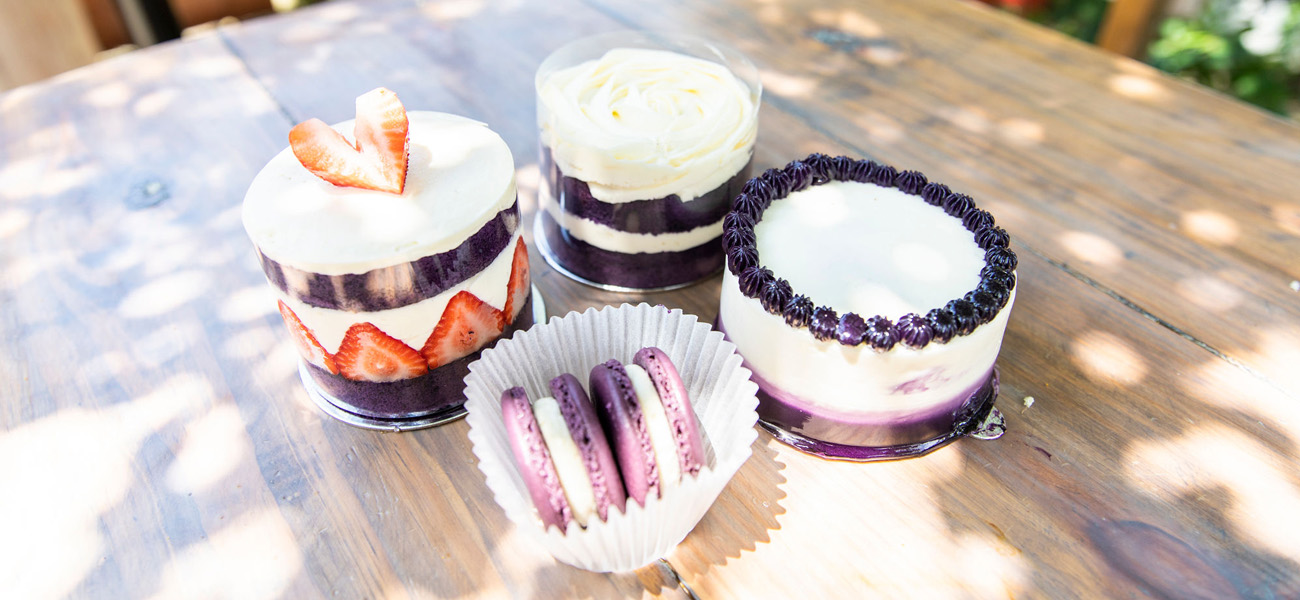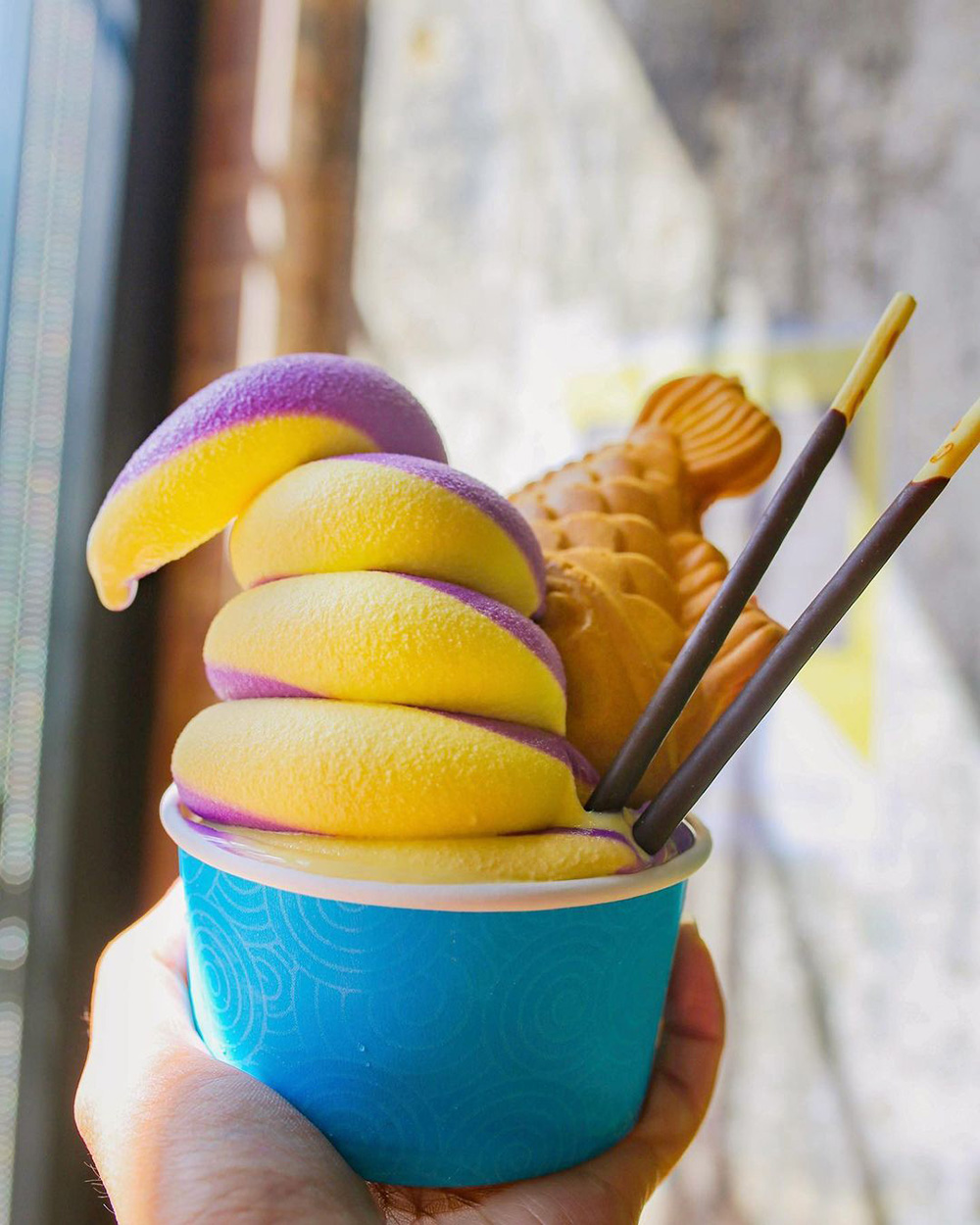
With its purple hue, ube-flavored desserts see an uptick during football season
“A lot of people go for it because it’s unique—how many times do you eat a purple dessert?” asks Kay Vong, owner of Sweet Society, a Mid City dessert shop that features ube soft serve.
Though ube, which means tuber in Tagalog, has long been a staple of Filipino desserts, its popularity has exploded in the U.S. over the past few years. The purple yam has a distinct, nutty flavor profile, and its violet hue makes ube desserts immediately photogenic.
At Sweet Society, ube is a staple ingredient in ice cream—often swirled together with milk ice cream and paired with taiyaki cake. It also marries nicely with the shop’s Pineapple Dole Whip soft serve—swirled together for a purple- and gold-hued frozen treat.
|
|

Boba ParTea, a boba shop and bakery on O’Neal Lane, makes ube-flavored macarons and customizable cakes. The pretty purple color of ube, combined with the moist texture of ube cakes, makes the demand high—especially in the fall.
“Everyone wants an ube cake with mango,” says owner Van Nguyen, “because yellow and purple go so well with football season.”
Both Vong and Ngyuen have noticed the growing popularity of ube, crediting it to the vibrant hue and the distinct, sweet, deep flavor. At both Boba ParTea and Sweet Society, ube dishes attract people familiar with the desserts as well as newcomers to ube, who might be further encouraged to try more desserts using Southeast Asian ingredients.

“We try to use more Asian flavors (in the bakery), and ube is one of the most popular Asian flavors,” Nguyen says. “We are hoping to come out with more ube-flavored desserts soon. These would include ube cheesecake and halo-halo, another cold Filipino dessert that makes use of ube and evaporated milk.”
Of Sweet Society’s four ever-changing flavors, ube is almost always on rotation.

“It’s our day one. It was in our very first set of flavors we introduced,” Vong says. “The few times I have removed it from the rotation, we did get a little feedback about customers being upset that ube was not available.”
And if you are looking to experiment with ube in your own dishes—or try other ube treats—Vong recommends exploring local Asian markets.
“The Asian grocery stores are probably the best bet to get ube snacks or pastries,” she says.
This article was originally published in the August 2022 Tiger Pride issue of 225 magazine.
|
|
|
